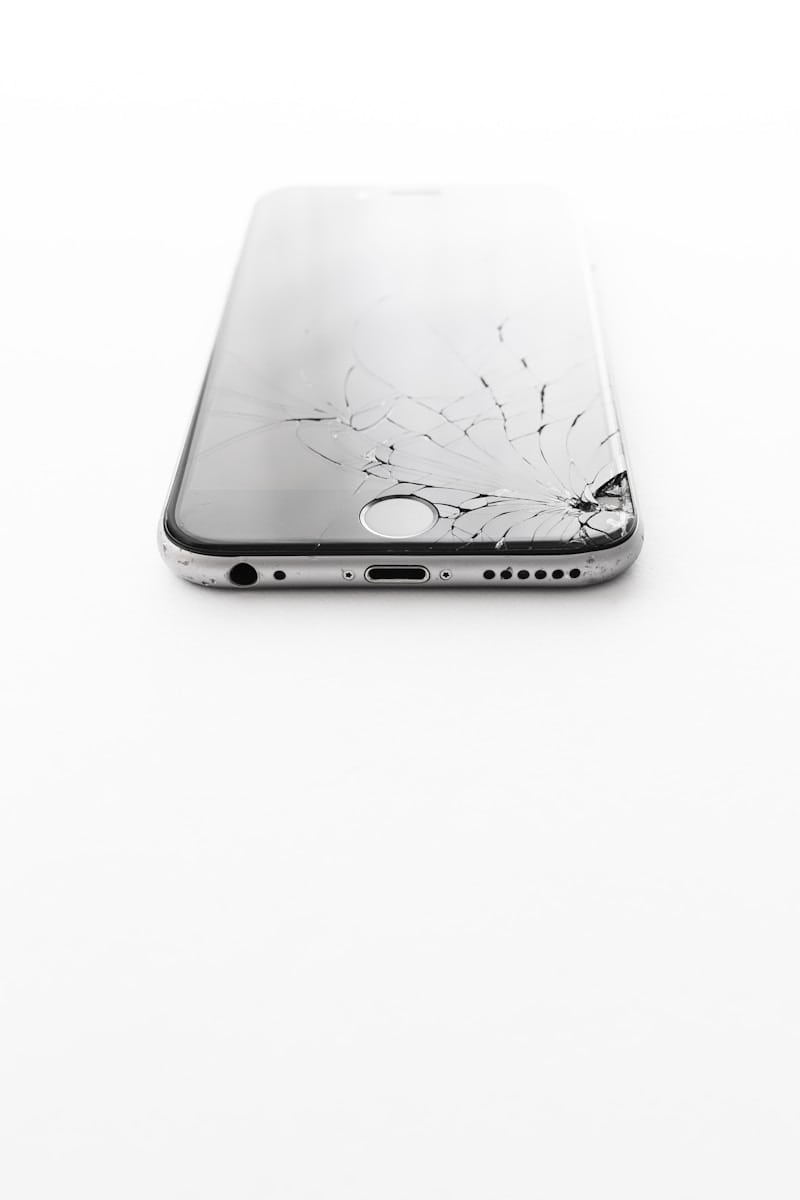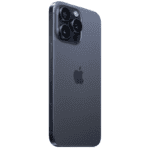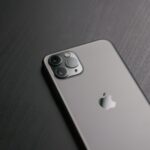Replacing your phone screen doesn’t have to mean losing all your data. You can keep your photos, contacts, and apps intact during a screen replacement if you take the right precautions.
Before handing over your device, back up your data. Most smartphones offer cloud backup options. For iPhones, use iCloud. Android users can try Google One. This step safeguards your info.
A reputable repair shop won’t wipe your phone without your consent. But accidents happen. Some shops do a factory reset as standard practice. Ask about their policies beforehand. If you’re worried, consider authorized service centers for your phone brand.
| Device Type | Backup Option | Notes |
|---|---|---|
| iPhone | iCloud | Free up to 5GB |
| Android | Google One | 15GB free storage |
| Samsung | Smart Switch | PC backup available |
Understanding Screen Replacement
Screen replacement involves addressing damage and choosing repair options. The process affects your phone’s functionality and data integrity. Consider the type of damage, repair methods, and potential risks before proceeding.
Types of Screen Damage
Cracked screens are the most common issue. They range from minor chips to shattered displays. Some cracks only affect appearance while others impact touch functionality.
Broken screens often have black spots or distorted images. This indicates damage to the LCD or OLED panel beneath the glass.
Water damage can cause screen discoloration or dead pixels. It may worsen over time if not addressed quickly.
Impact damage sometimes affects internal components. This can lead to unresponsive areas or flickering displays.
Screen Replacement Options
Professional repair shops offer reliable screen replacement. They use genuine parts and have specialized tools. Most guarantee their work for a limited time.
DIY screen replacement kits are available for many phone models. These include replacement screens, tools, and instructions.
Mobile repair vans provide on-site service. They’re convenient but may have limited part availability.
Some manufacturers offer mail-in repair services. These can take longer but ensure genuine parts and expert handling.
Pros and Cons of DIY Versus Professional Repair
DIY Repair:
Pros:
• Lower cost
• Immediate fix
• Sense of accomplishment
Cons:
• Risk of further damage
• Potential loss of features like water resistance
• May void warranty
Professional Repair:
Pros:
• Expertise and proper tools
• Genuine parts
• Warranty on repair
Cons:
• Higher cost
• Possible wait times
• Need to leave device with technician
| Aspect | DIY | Professional |
|---|---|---|
| Cost | Lower | Higher |
| Risk | Higher | Lower |
| Time | Immediate | May have wait |
| Quality | Varies | Consistent |
Choose based on your skill level, budget, and device value. Professional repair is often safer for newer or high-end phones.
Data Preservation Strategies
Protecting your phone’s data during screen replacement is crucial. Proper backup methods, precautionary steps, and restoration techniques ensure your information stays safe.
Backing Up Your Data
Before sending your phone for screen replacement, back up all important data. Use your phone’s built-in backup feature to save settings, messages, and photos to the cloud. For Android devices, go to Settings > System > Backup. iPhone users can use iCloud or iTunes for backups.
Create a full backup of your smartphone to avoid losing anything. Don’t forget to save:
- Photos and videos
- Contacts
- Messages
- App data
- Documents
Consider using third-party backup apps for more control over what you save. These often offer additional features like selective backups or local storage options.
Avoiding Data Loss During Screen Replacement
To prevent data loss during screen repair, take these steps:
- Remove your SIM card and memory card if possible.
- Sign out of your accounts.
- Disable screen lock and remove any passwords.
- Perform a factory reset if you’re very concerned about privacy.
Tell the repair technician not to reset your device unless necessary. Most screen replacements don’t require wiping your phone’s memory.
| Action | Purpose |
|---|---|
| Backup | Safeguard data |
| Remove cards | Protect personal info |
| Disable locks | Allow technician access |
| Factory reset | Ensure privacy (optional) |
Restoring Data Post Repair
After getting your phone back with the new screen, check if all features work correctly. Then start the restoration process.
For cloud backups:
- Sign in to your account.
- Go to backup settings.
- Choose the most recent backup to restore.
If you used a local backup:
- Connect your phone to the computer.
- Use the backup software to restore data.
Be patient during restoration. It may take time depending on how much data you’re recovering. Setting up from scratch can help avoid transferring old issues, but it’s more time-consuming.
Check that all your apps, photos, and messages are back. If something’s missing, you might need to restore it manually or contact your service provider for help.
Choosing the Right Repair Solution
When your phone screen needs replacing, you’ll face several important choices. These decisions will affect the quality, cost, and long-term reliability of your device repair.
Assessing Repair Services and Costs
Repair shops vary in quality and pricing. Compare at least 3-5 options before deciding. Ask about their experience with your specific phone model.
Check online reviews and ask for recommendations from friends. Some shops offer warranties on their work, which can provide peace of mind.
Consider the repair cost versus buying a new phone. For older models, replacement might be more cost-effective if the repair price exceeds 50% of a new device’s cost.
| Repair Option | Pros | Cons |
|---|---|---|
| Authorized Service | Official parts, warranty | Higher cost |
| Local Repair Shop | Often cheaper, faster | Quality may vary |
| DIY Repair | Lowest cost | Risk of damage |
Warranty and Insurance Considerations
Check if your phone is still under warranty before paying for repairs. Apple and Samsung offer extended coverage through AppleCare+ and Samsung Care+ respectively.
These plans often cover accidental damage for a small fee. If you have phone insurance, review your policy. It may cover screen replacement at a reduced cost.
Remember that using unauthorized repair services can void your warranty. Weigh this risk against potential savings from third-party repairs.
Selecting Quality Replacement Parts
The quality of replacement parts significantly impacts your repair’s durability. Original equipment manufacturer (OEM) parts are ideal but often pricier.
Third-party parts can be a good compromise between cost and quality. Ask your repair service about the origin and quality of their parts.
For phones with advanced features like in-screen fingerprint sensors, using high-quality parts is crucial. Cheap screens may not support all functions.
Be wary of extremely low-priced repairs. They often use low-quality parts that can fail quickly or cause other issues.
Aftercare and Maintenance Post-Screen Replacement
After replacing your phone screen, proper care ensures longevity and optimal performance. Clean the new screen gently with a microfiber cloth. Avoid harsh chemicals or abrasive materials.
Apply a screen protector promptly. This safeguards against scratches and minor impacts. Choose a protector compatible with your device model.
Check your phone’s display settings. Adjust brightness and color as needed. Some repairs may reset these to default values.
Test all touch functions thoroughly. Swipe, tap, and use multi-finger gestures across the entire screen. Report any issues to the repair service immediately.
Here’s a quick guide for post-replacement care:
| Action | Frequency |
|---|---|
| Clean screen | Daily |
| Check for issues | Weekly |
| Update software | Monthly |
| Replace protector | Every 6 months |
Monitor battery life closely. A new screen might affect power consumption. If you notice significant changes, consult a technician.
Be cautious with water exposure. Even water-resistant phones may need time to regain full protection after repairs.
Keep your phone’s software updated. This ensures compatibility with the new hardware and can resolve potential glitches.
Handle your device with extra care initially. The new screen may be more sensitive to pressure or temperature changes.
If you experience any persistent issues, don’t hesitate to contact the repair service. Most offer warranties on their work.
Frequently Asked Questions
Screen replacements raise concerns about data loss and device functionality. Let’s address common questions to help you understand what to expect during this repair process.
Will data loss occur during a Samsung screen replacement?
Most Samsung screen replacements don’t cause data loss. Reputable repair shops perform a factory reset before starting work. This protects your data and prevents theft claims.
Back up your phone before repair to be safe. Use Samsung Cloud or Smart Switch to save your important information.
Is it necessary to back up my phone prior to a screen replacement?
Backing up your phone before a screen replacement is highly recommended. While data loss is unlikely it’s better to be prepared.
Use your phone’s built-in backup features or third-party apps to save contacts photos and important files. This precaution ensures you don’t lose anything valuable during repair.
Do repair services for phone screens pose a risk to the privacy of my data?
Reputable repair services prioritize customer privacy. They often reset devices before repairs to avoid accessing personal data.
Choose trusted repair shops with good reviews. Ask about their data protection policies before handing over your device.
Can the functionality of the phone be impacted after screen replacement?
Screen replacement can affect phone functionality if not done properly. Issues may arise with touch sensitivity or fingerprint scanners.
Choose quality parts and skilled technicians to minimize risks. Test all functions immediately after repair.
Will changing the battery on my iPhone result in data loss?
Changing an iPhone battery typically doesn’t cause data loss. Apple’s repair process is designed to preserve your information.
Back up your iPhone before battery replacement as a precaution. This ensures you have a recent copy of your data just in case.
Are third-party replacement screens comparable in quality to originals?
Third-party screens vary in quality. Some match original specifications while others fall short.
High-quality aftermarket screens can offer good performance at lower prices. However they may lack features like True Tone display on iPhones.
| Screen Type | Pros | Cons |
|---|---|---|
| Original | Perfect fit guaranteed | More expensive |
| High-quality third-party | Lower cost good performance | May lack some features |
| Low-quality third-party | Cheapest option | Poor display quality possible malfunction |
Choose reputable repair shops that offer warranties on their parts and work.






